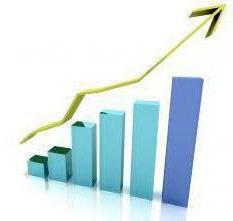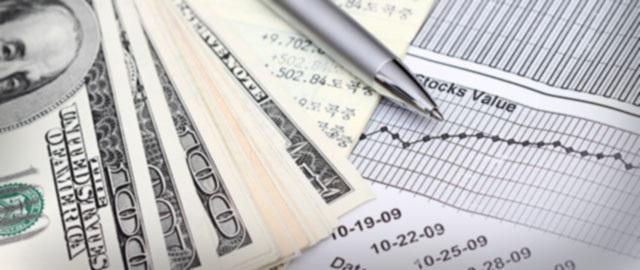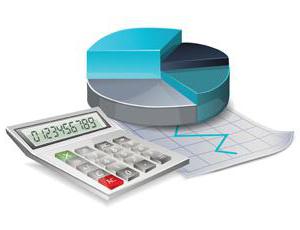The activities of any company are aimed at making a profit, which is a quality indicator of the appropriateness of its activities. Gross profit is characterized by the rational use of all resources of the enterprise.
The concept of gross income
Profit is the division of costs for the production of goods (provision of services) by the proceeds from their sale.
Gross profit shows the feasibility of the enterprise. This is the ratio of the cost of production to income from its sale.

When comparing gross profit with net profit, it is important to remember that the former consists not only of production costs, but also of taxes.
Calculation formula
The calculation of gross profit can be carried out as follows:
VP = D - (C + 3), where:
- VP - gross profit;
- D - sales volume of products (services) in den.ed .;
- C - the cost of production of products (or services);
- З - production costs.
For the calculation, it is necessary to subtract the cost of sold products (services) from the amount of revenue.
Gross profit formula for financial statements
The indicator “Gross profit” (line 2100) is calculated as follows: “Cost of sales” (line 2120) is deducted from the “Revenue” (line 2110).
The essence of a competent calculation of gross profit is a detailed study of all cost items that are included in the cost of production (services). All cost items must be taken into account, especially for those that were not initially taken into account and that appeared during the sale of products (services).
There is a fairly well-known definition of cost: these are all the resources that have been spent on the production and marketing of products (services), they are usually expressed in cost equivalent.

Only if there is a full idea of the costs of production and marketing of products (services), you can get a full calculation of the size of gross profit for the selected period.
Factors Affecting Gross Profit
Gross profit is influenced by a large number of factors. They are divided into management-dependent and independent companies.
The first group of factors include the following:
- an indicator of growth in the release of goods (services) and their marketing;
- improving the competitiveness and quality of goods (services) in general;
- replenishment of the assortment of goods (services);
- reduction in production costs;
- improving staff productivity;
- full use of production assets;
- a systematic study of the marketing strategies of the enterprise, and, if necessary, their adjustment.
Among the factors that do not depend on control, there are such:
- natural, environmental, territorial, geographical conditions;
- amending legislation;
- changes in government business support policies;
- transport and resource transformations globally.

As a result, it is necessary to have a management strategy that can be quickly adjusted, and the ability to quickly transform the policy of production and sale of products (services).
Release and sales conditions
These actions should be aimed at maintaining the company in optimal condition. The first category of factors involves adjustment and intervention in the strategy by the enterprise management. Increasing the volume of output and sales of products (services), the company simultaneously increases turnover, which positively affects the growth rate.
An important role is given to maintaining momentum and production volumes products (services) in fairly high positions and try not to allow them to decrease, as this will adversely affect the size of gross profit.
It is important to note that stocks of finished products adversely affect the production picture, being an unprofitable burden for the company. However, their implementation would help increase revenue.
Some businessmen use various methods for the most profitable sale of these unclaimed balances, they try to return at least part of the resources used for them. But these actions have very little effect on gross margin.

Gross profit, the formula of which contains a term such as "cost", indicates that the latter requires regular monitoring. It is important to apply innovative production technologies, to seek and develop more optimal options for product delivery to consumers, to seek out economical energy resources and their alternative sources. These steps will help to significantly reduce costs, the result will be an increase in gross profit.
What can affect the size of the indicator "gross profit"
The calculation formula indicates that the price policy of the enterprise may influence the indicator in question. High competition is forcing entrepreneurs to rethink price policies. However, it is not necessary to strive for a constant reduction in the price of a product (service). It is better to build a strategy to establish the optimal price and stay on it, consistently making a profit, albeit a small one. In addition, it is important to regularly conduct a demand analysis in order to understand in time which production of a product (service) should be abandoned. Indeed, it is the realization of profitable products that provides the company with the opportunity to get the highest possible gross income, while increasing the size of net profit.
It is also important to monitor the level of inventories that are currently unclaimed. Their storage, most likely, does not pay for itself, so it is important to quickly develop measures to get rid of these stocks. Cash received in this way increases gross margin.
Such items of income as interest on deposits or shares, rental property and other sources also contribute to the growth of the gross profit of the enterprise.
How to correctly distribute profits
Having sold a batch of goods and received a certain amount of income, it is important to correctly dispose of it. This distribution may look as follows.
The highest step is gross profit.

The cost of production has already been taken into account. The following are expense items:
- rent;
- payment of interest on loans;
- all kinds of taxes;
- charity.
The result is net profit.
The following items of expenses come from net profit:
- the formation of the social infrastructure of the company and the state;
- training;
- environmental funds;
- cash reserves;
- own profit of the owners of the organization.
As a result of such a distribution of gross profit, the enterprise will be able to optimally develop, improve production, and increase staff potential. Also in the future, this will increase the amount of net profit.
Summary
Gross profit is revenue minus cost. It differs from net profit in that it does not bear the variable and transaction costs, as well as the amount of taxes.
Gross profit formula:
PV = B - C, where:
- In - revenue;
- C is the cost.
To obtain the optimal gross profit, it is important to first determine the cost items that are included in the cost of goods (services), including variables that have not previously been taken into account. Having an idea of all the costs of the production and sale of goods (services), you can accurately calculate the size of gross profit for a certain period.








